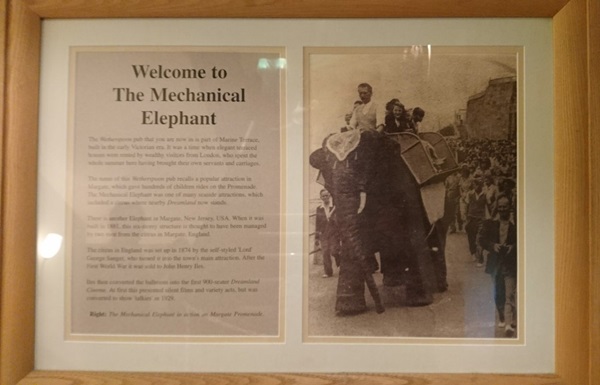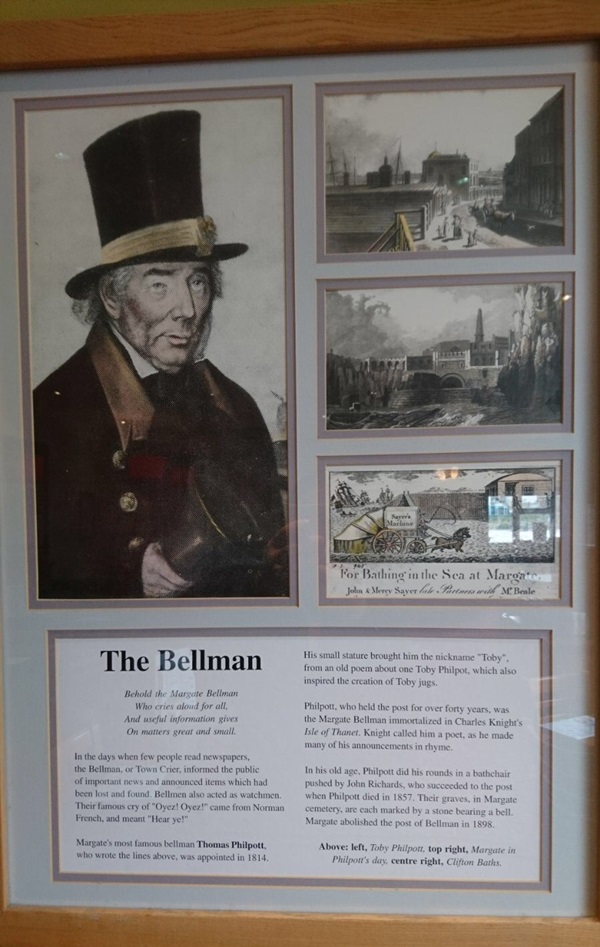The name of this pub recalls the popular attraction which gave hundreds of children rides on the promenade.
A photograph and text about The Mechanical Elephant.

The text reads: The Wetherspoon pub that you are now in is part of Marine Terrace, built in the early Victorian era. It was a time when elegant terraced houses were rented by wealthy visitors from London, who spent the whole summer here having bought their own servants and carriages.
The name of this Wetherspoon pub recalls a popular attraction in Margate which gave hundreds of children rides on the Promenade. The Mechanical Elephant was one of many seaside attractions, which included a circus where nearby Dreamland now stands.
There is another Elephant in Margate, New Jersey, USA. When it was built in 1881, this six-storey structure is thought to have been managed by two men from the circus in Margate.
The circus in England was set up in 1874 by the self-styled ‘Lord’ George Sanger, who turned in into the town’s main attraction. After the First World War it was sold to John Henry Iles.
Iles then converted the ballroom into the first 900-seater Dreamland Cinema, at first this presented silent films and variety acts, but was converted to show ‘talkies’ in 1929.
Right: The Mechanical Elephant in action on Margate Promenade.
Prints and text about the Bellman.

The text reads: Behold the Margate Bellman
Who cries aloud for all,
And useful information gives
On matters great and small.
In the days when few people read newspapers, the Bellman, or Town Crier, informed the public of important news and announced items which had been lost and found. Bellmen also acted as watchmen. Their famous cry of “Oyez! Oyez!” came from Norman French, and meant “Hear ye!”.
Margate’s most famous bellman Thomas Philpott, who wrote the lines above, was appointed in 1814.
His small stature brought him the nickname “Toby”, from an old poem about one Toby Philpott, which also inspired the creation of Toby jugs.
Philpott, who held the post for over forty years, was the Margate Bellman immortalized in Charles Knight’s Isle of Thanet. Knight called him a poet, as he made many of his announcements in rhyme.
In his old age, Philpott did his rounds in a bathechair pushed by John Richards, who succeeded to the post when Philpott died in 1857. Their graves, in Margate cemetery, are each marked by a stone bearing a bell. Margate abolished the post of Bellman in 1898/
Above: left, Toby Philpott, top right, Margate in Philpott’s day, centre right, Clifton Baths.
If you have information on the history of this pub, then we’d like you to share it with us. Please e-mail all information to: pubhistories@jdwetherspoon.co.uk